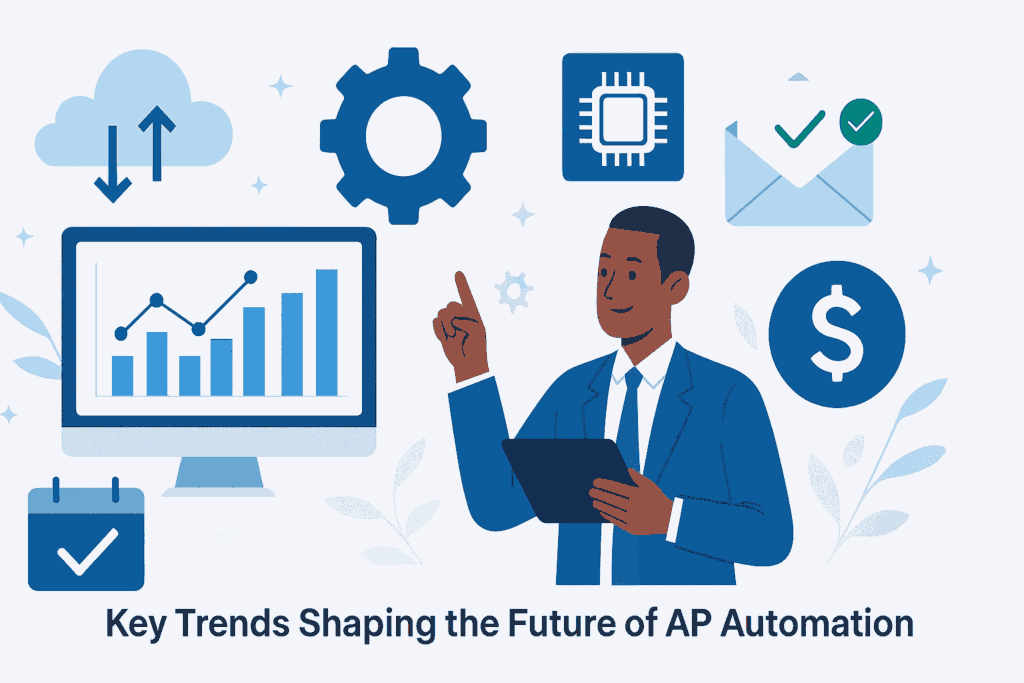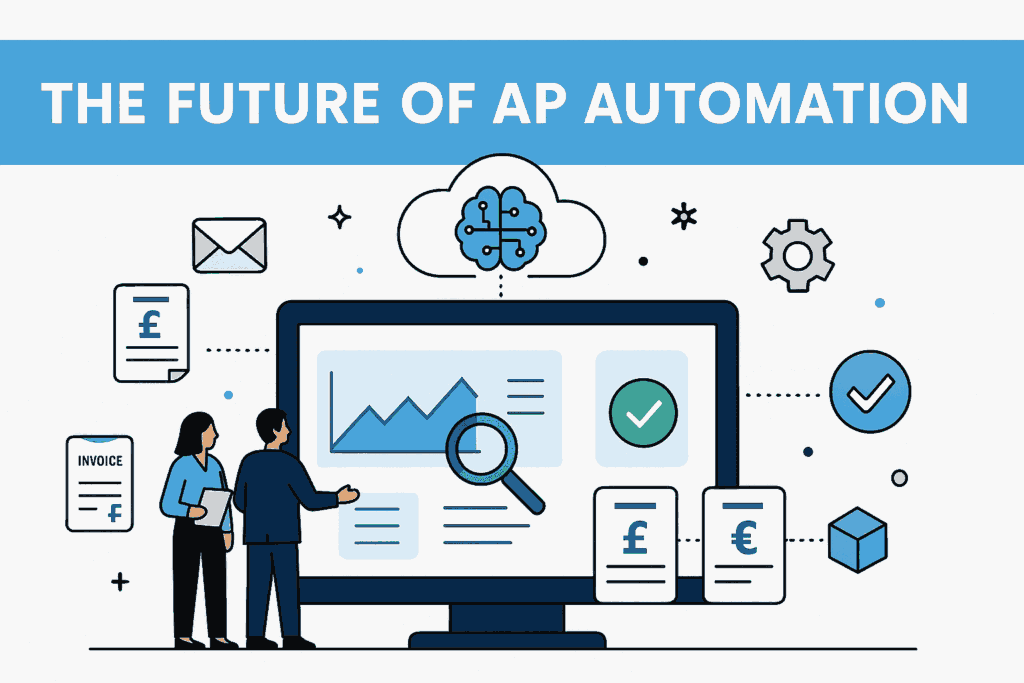Finance Is Evolving—Is Your AP Process Ready?
The role of finance teams is shifting rapidly. As the future of AP automation takes shape, speed, accuracy, and visibility are no longer optional. Traditional accounts payable (AP) systems are falling behind. Manual data entry, paper invoices, and fragmented approvals are proving too slow and too error-prone for today’s business environment especially in fast-moving markets like Malaysia and Singapore.
This evolution brings a clear question to the forefront: Is your AP process equipped to support what’s next? The future of AP automation isn’t just about technology it’s about unlocking smarter, scalable, and more strategic financial operations.
What Is the Future of AP Automation?
The future of AP automation is defined by touchless workflows, real-time decision-making, and intelligent systems that go far beyond simple invoice scanning.
In short, it means moving from automation that “follows rules” to platforms that learn and optimise over time. We’re entering a phase where AP tools will use AI to predict risks, recommend actions, and integrate deeply with procurement, compliance, and cash flow planning all in real time.
Instead of asking, “Where is that invoice?”, finance teams will ask, “What’s the best time to pay this supplier to maximise value?
Key Trends Shaping the Future of AP Automation

The future of AP automation is not just digital — it’s intelligent. Several key trends are pushing the boundaries of what’s possible in accounts payable:
- AI and Machine Learning
AP platforms are learning from past data to automatically classify invoices, predict approval paths, and flag anomalies — reducing human input without losing control. - Touchless Invoice Processing
Invoices can now move from receipt to payment without manual handling. Advanced matching rules and approval routing cut delays and errors. - Real-Time Fraud Detection
The days of reactive fraud investigation are ending. Tools like Medius Copilot are already enabling proactive fraud detection using smart anomaly tracking. - Integration Across the Finance Stack
AP systems are increasingly connected with procurement, ERP, and spend management tools — creating a seamless flow of data across the organisation.
Benefits Businesses Can Expect in the Next 3–5 Years
For finance teams in Malaysia and Singapore, the next few years will redefine how payments are managed. By embracing the future of AP automation, organisations can expect:
- Faster Approval Cycles
Automation reduces bottlenecks by ensuring invoices reach the right approvers instantly, even across multiple departments. - Reduced Costs and Errors
Fewer manual steps mean fewer mistakes — and less time spent on rework or dispute resolution. - Improved Supplier Trust
Consistent, on-time payments strengthen supplier relationships and give companies an edge during negotiations. - Scalability Without Added Headcount
As businesses grow, AP automation scales without the need to hire more staff or increase overhead.
Barriers to Adoption (and How to Overcome Them)
Despite the clear advantages, many organisations hesitate to adopt automation due to legacy systems, budget limitations, or fear of change. Here’s how to address the most common barriers:
- Change Resistance
Teams used to manual workflows may feel automation threatens their roles. The key is education — showing how automation reduces busywork, not jobs. - Integration Complexity
Businesses worry about how automation will work with existing ERPs or finance platforms. However, modern AP tools are built with integration in mind, offering APIs and plug-and-play connectors. - Budget Concerns
While the upfront cost can be a concern, the long-term savings are significant. Many businesses quickly realise that the future of AP automation pays for itself through efficiency gains and fewer errors.
Want to see real savings in action? Explore how AP automation helps prevent invoice fraud and reduces costly mistakes before they impact your bottom line.
How Forward-Looking Finance Teams Can Prepare Today
To stay competitive, finance leaders need to prepare now — not wait until automation becomes the norm.
- Invest in Scalable Solutions
Choose tools that support growth and adapt as your processes evolve. - Build Internal Buy-In
Engage stakeholders early and show how automation enhances accuracy, visibility, and control — not just speed. - Focus on Visibility and Collaboration
Forward-thinking teams don’t just automate tasks — they use data for smarter decisions. Tools like Supplier Conversations help bridge the gap between finance teams and vendors, creating more transparent, reliable relationships.
The Future of AP Is Here—Are You Onboard?
The shift toward automated, intelligent accounts payable is already underway — and businesses that delay risk falling behind. As AP systems evolve from task-based tools to strategic enablers, finance teams must evolve with them.Whether your focus is fraud prevention, faster processing, or long-term scalability, the future of AP automation for vendor payments promises more control, less complexity, and stronger supplier partnerships. The next step? Begin evaluating your current workflows — and take action before your competitors do.

